Lab spaces
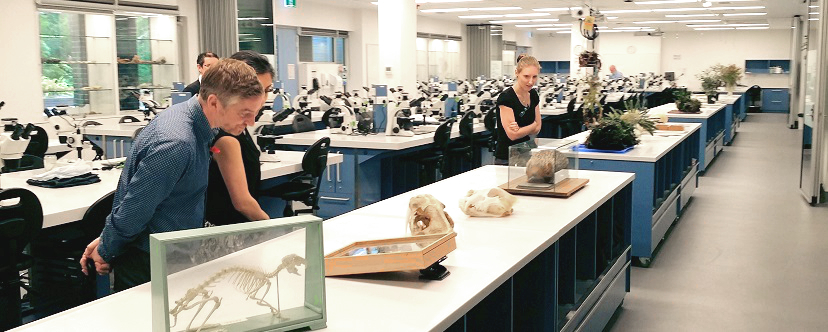
Introduction
The design of Laboratories across the university is to be based primarily on the function/functions that are proposed to be undertaken.
Although each laboratory will be designed and developed in conjunction with the end users of the specific laboratory, all the laboratories will be based on one of the three basic laboratory types, to permit future flexibility of the space, and enable use of the space for different laboratory functions or future emerging laboratory needs.
The general term laboratory will include the laboratory function space and adjacent interconnected ancillary spaces such as, preparation rooms, store rooms, etc. (refer to individual laboratory types for further information)
General Design Requirements
Design of laboratory facilities are to meet the requirements of the building regulations (BCA), the relevant Australian Standards, and minimise risks associated with the DDA.
The design of the facilities should also consider the methods of storage of hazardous and flammable substances to meet the requirements of the relevant standards.
These requirements also apply to the positioning of special and specific equipment, and safety measures, such as:
- Fume Cupboards
- Emergency showers and eye wash / basins
Specific Design Requirements
All laboratories across the campus are to be designed to meet the requirements for a Physical Containment Level 1 (PC1) laboratory, as a minimum, under the Australian Standards and the regulations for accreditation of labourites by the Office of the Gene Technology Regulator (OGTR). Depending upon the individual functional requirements, individual laboratories may be design to meet additional requirements and meet the standards for a PC2, PC3 or PC4.
Registration and/or certification of laboratories under the OGTR or DAFF, if required is to be arranged and co-ordinated by the individual faculty.
Laboratories across the campus are categorised as being one of either:
- Teaching Laboratory Dry - (will only have hydraulic plumbing to a single hand basin located adjacent to the main entry)
- Teaching Laboratory Wet and Damp - (will have hydraulic plumbing to perimeter benches and centre work benches)
Other Variations & Options
For each Laboratory zone additional areas/spaces may be required to suite the specific laboratory functional uses, and educational curriculum.
These spaces will be added to the generic laboratory design as required by the specific users.
These spaces may include areas such as:
- Specific equipment function space, Communications / server rooms.
- Equipment storage spaces;
- Operational function areas, such as Robotics test laboratories.
Laboratory Design Planning
When planning for a new laboratory or a major refurbishment of a laboratory it is important to gather all the necessary specific details that the facility is to be designed to.
To start the process a good guide is to ask the following questions:
- What Type of Laboratory ?
- Teaching Laboratory
- Research Laboratory
- If a Teaching Laboratory, what is being Taught?
- What Chemicals will be used in the Laboratory?
- What equipment is to be used?
- New or existing equipment?
- Floor standing or bench mounted?
- How heavy is the equipment?
- Any special requirements (power, gas, etc)
- What services are required in the Laboratory?
- Gas
- Ventilation
- Humidity
- Temperature
- STD Natural Gas locations
- to demonstration bench?
- To perimeter Benches (Damp Lab)?
- To perimeter benches and central work desks (wet Lab)?
- Other Gasses?
- What Type of Water is required?
- Standard Potable cold water to basins and safety showers (Typical of all Labs)
- Standard Non-Potable Hot & Cold Water to Sinks (Damp & Wet Labs)
- Other RO Water when required (Project specific)
- How many staff or students will be using the space?
- What are the storage requirements?
Example Spaces
Building E8A, Level 2 Labs:
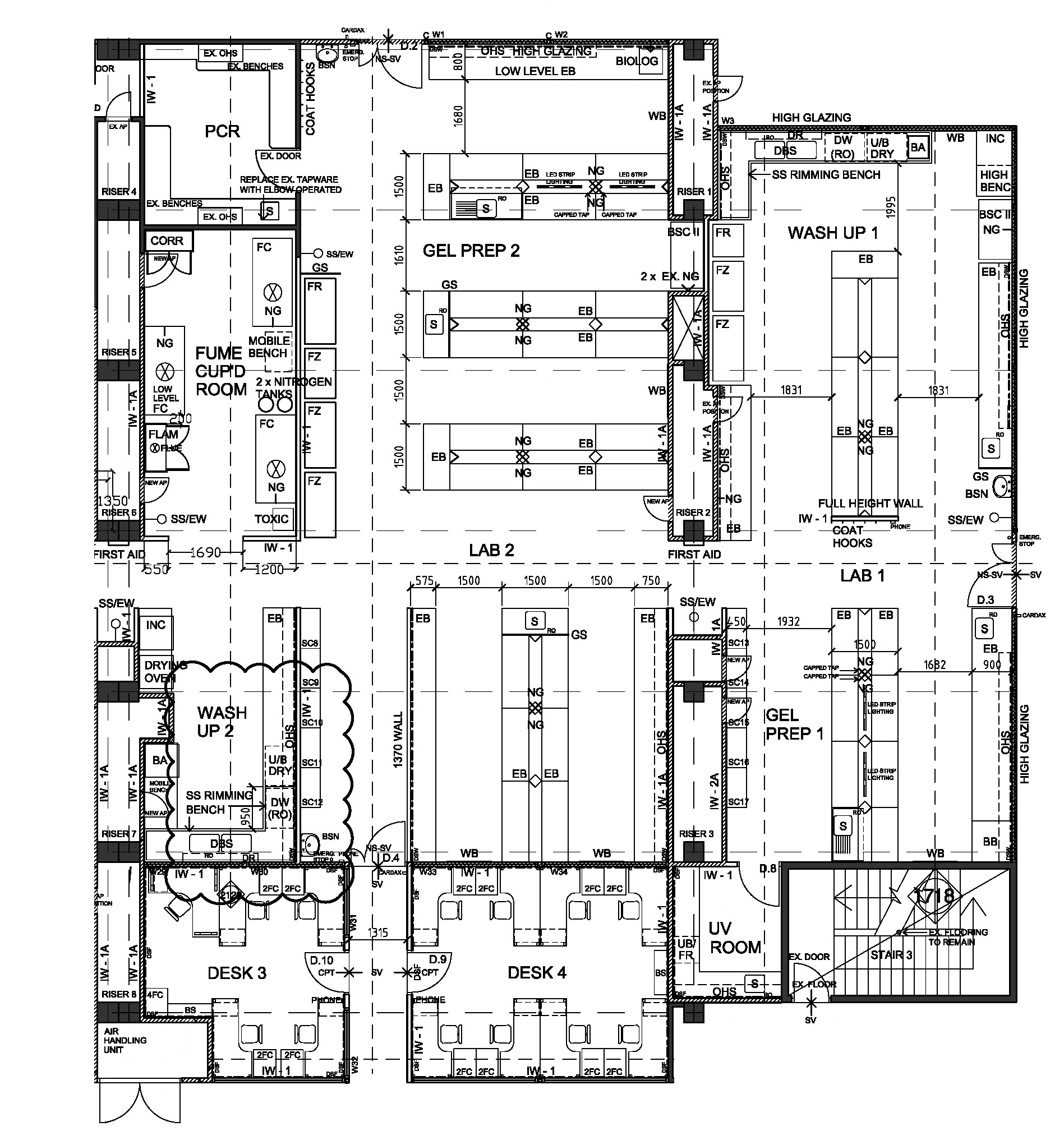 | 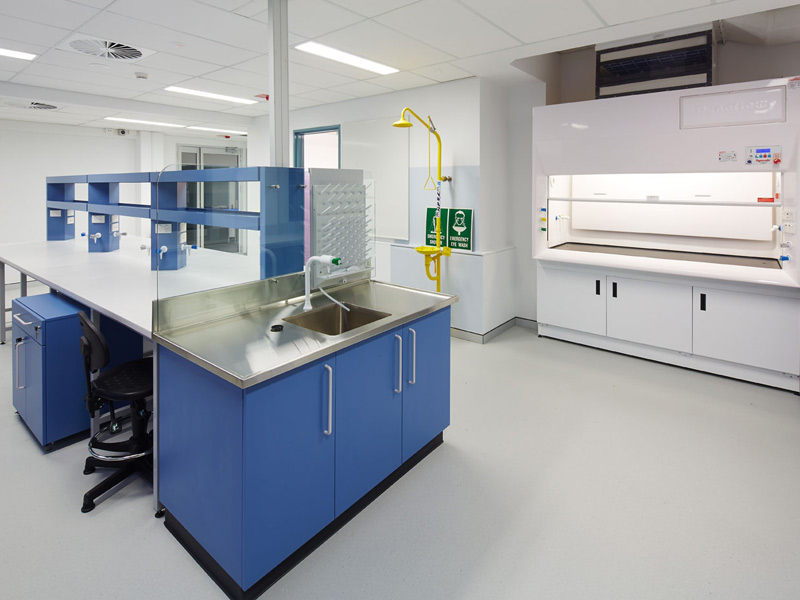 |
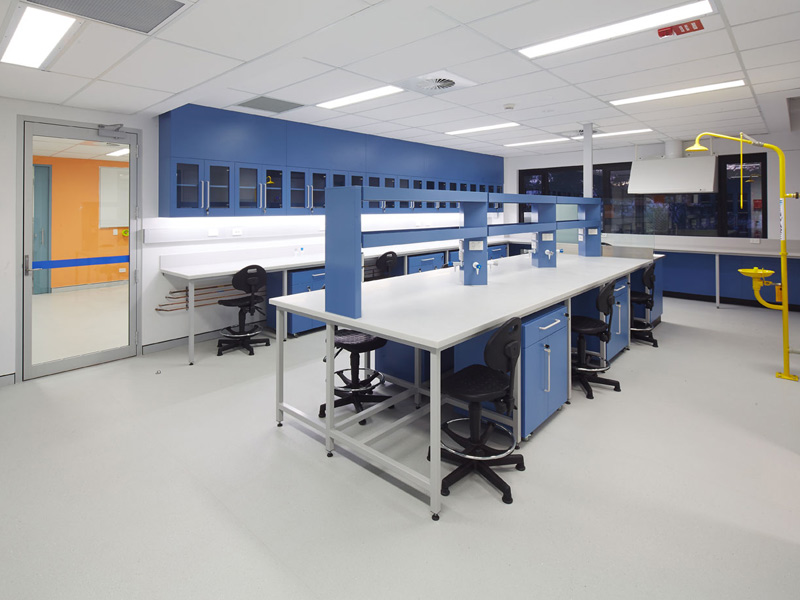 | |
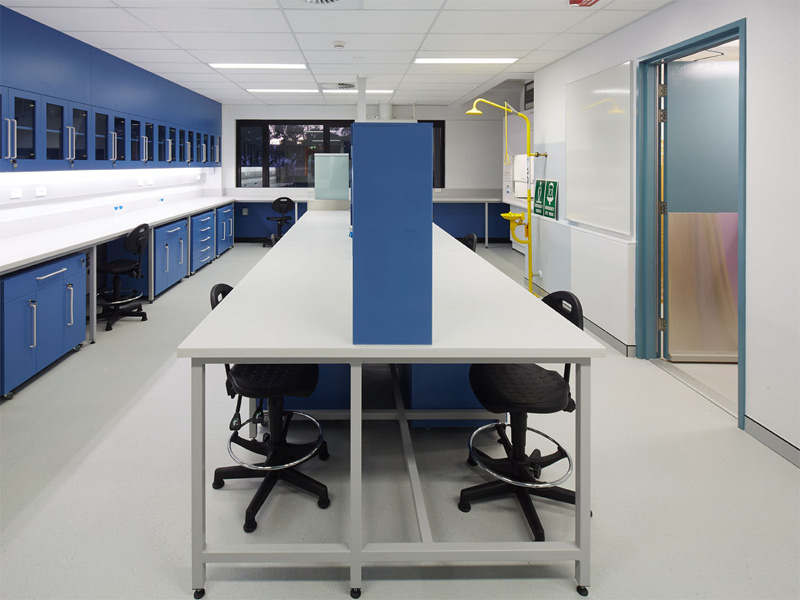 |
